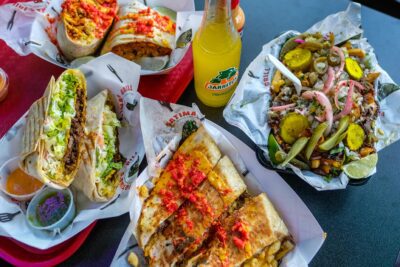The Power of the Market: On the Whims of the Flea Market Economy
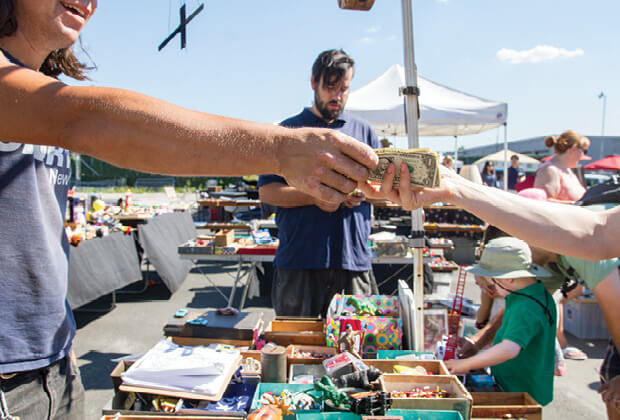

The Brooklyn Flea
photos by Jane Bruce
In April of this year, Belvy Klein and Aaron Broudo gathered the staff of the Brooklyn Night Bazaar at the 23,000-square-foot Greenpoint warehouse the sprawling market had called home for the past two years. It wasn’t Brooklyn’s best-known market, but it was definitely notable. Its mix of food stands, craft vendors, and games could draw as many as 7,000 visitors in a single night and employed up to 250 people. You can still spot it every week in the opening credits of Saturday Night Live. It also hosted concerts for reasonably popular bands like Priests, Beverly, Hop Along, Here We Go Magic, and The Pains of Being Pure at Heart. After getting priced out of their last two spaces, it seemed like the Night Bazaar had it made.
They did not. This year, the Night Bazaar was priced out of its new space, too. The building’s new tenant, BMW, was literally offering to pay the building’s owner ten times the Night Bazaar’s rent at the time—roughly $2.3 million. The Bazaar was told they could match the offer, but after weeks of running numbers—maybe they could charge admission, or book bigger bands—its founders gave up. They’d have to close. Klein and Broudo had assembled the staff together to break the news.
“People were physically shaken,” Klein told me on a recent afternoon, hunched on a picnic table at his new venture, Riis Park Beach Bazaar, in the Rockaways national park. “You know, guys and girls were crying… there was a lot of anger.”
While a statement from BMW confirmed that the company is the new tenants, the international automaker is vague about the timing and character of its use for the Night Bazaar’s former space. It said it has “no plans to use the building for either retail or corporate purposes from our side. We are still in the planning stages at this time.” In other words, a bustling civic space has disappeared, replaced by nothing but extra money in a landlord’s pocket.
Is this a rare outlier, an improperly managed space failing to look after its business? Or a sign of things to come? Will Brooklyn’s many flea markets and food bazaars soon find themselves in the same boat as many other small businesses, replaced by national chains and condo towers?
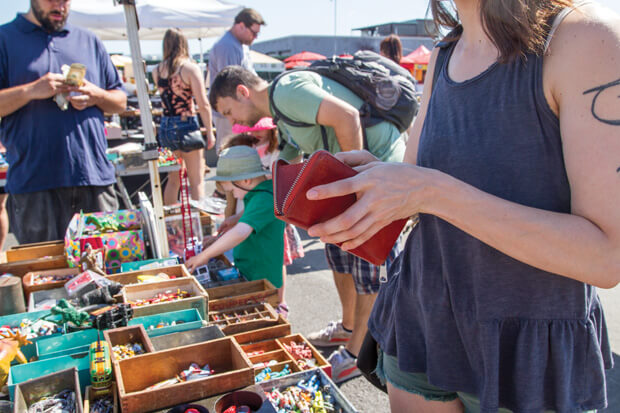

Brooklyn certainly didn’t invent markets, which have existed since humans began to gather together in cities in the late Neolithic Era, around 5,000 years ago. Plato, never one to take a concept as self-explanatory, uncharacteristically breezes by the idea of a market in the Republic, which dates to around 380 BC. He’d been discussing the character of a city, taking as a starting point the absolutely essential needs of its people: food, shelter, and clothing. Therefore, he proposes that the city needs a farmer, a house-builder, and a weaver. This being Plato, one conclusion leads inexorably to another premise. People have other needs, he posits, and before long the list of necessary professionals has grown to include carpenters, smiths, shepherds, and shoemakers. With all these goods made by all these tradesmen flowing around the city, he asks his interlocutor, how does the right product find the person who needs it most?
Adeimantus: Clearly, by buying and selling.
Plato: Then this will give rise to a market and a currency, for the sake of exchange.
Adeimantus: Undoubtedly.
Despite being almost literally as old as time (or at least as old as timekeepers), and proliferating everywhere from London to Marrakech, markets have come to define Brooklyn in the past several years. Its markets are beyond numerous, happening in schoolyards and parking lots, under tents and inside shipping containers, with vendors selling everything from small press books to antique arrows to taxidermy to foods of all description. It can seem like every organization interested in gathering people together for basically any purpose now appends the word “flea” to their gathering to give it some cache.
Brooklyn’s image as a place of crafty, locavore, day-drinking, vinyl-obsessed gourmet decadents can be reflected in its markets. Or, more specifically, one of its markets: The Brooklyn Flea, started in 2008 by former writer and minor Brooklyn official Eric Demby and former Merrill Lynch VP Jonathan Butler.
When the Flea started, bands, chefs, and crafters in Brooklyn had been joining each other in apartments and basements and trying new ideas. A movement had formed, but it didn’t have a center, and certainly not one that was open in the daytime. Demby was working in Brooklyn city government at the time and fielding requests from tourists who’d ask him where to go to experience Brooklyn.
“There was not an obvious place to tell people to go to get a taste of it. Right?” he told me over the phone on a recent afternoon. “Walk across the Brooklyn Bridge, and then it’s like—there’s nothing there. Go to Coney Island. Well, that’s not really representative of Brooklyn in general, exactly. Go take a walk on the Brooklyn Heights promenade. Those are all like things that you can do, but… they’re not like obvious tourist destinations.” Demby thought perhaps he could make one, a “cross section of like, I don’t know, a lot of the currents going on in Brooklyn. The creative part, the style, the food, the families in the strollers, the neighborhoods—all of that. You can kind of get a taste of it, and buy stuff, and eat within a few hours. And that’s kind of what your typical visitor is looking for a lot of the time.”
The Flea incorporated food from its very early days, importing vendors from the Colombian, Salvadoran, and Mexican food trucks that surrounded the Red Hook Ballfields; and in 2011, the pair launched Smorgasburg, a food-only Flea spinoff. The name is a portmanteau of “smorgasbord” and “Williamsburg,” a joke which is perhaps more obvious in its original home on the water in East River State Park than in its locations in Queens, Brooklyn Bridge Park (recently relocated to Prospect Park), and the South Street Seaport.
Now in his early 40s, Demby has relaxed into a role managing the Flea’s 10 locations and many staff at an executive level after several years as the Flea’s on-the-ground, day-to-day manager. He is wary of me, and can be flip and icy in the way of someone whose taste has been repeatedly and lucratively validated at a high level. At one point, I try asking him if he feel the increasing corporatization of the Flea and Smorgasburg’s vendors has sapped any of its charm. Wasn’t part of the draw connecting with a person, and not the first draft of a tiny corporation?
“Are you saying that the vendors at the Flea are not actually small companies?” he fires back. After a bit more consideration, he said, “I think what you’re responding to, or at least what you’re saying, is that it’s, like, kind of cuter when you see someone basically learning in public.” Today, vendors at the Smorgasburg don’t have that luxury. Entry is notoriously competitive. Those interested in getting in (and there are hundreds if not thousands of small businesses who are) must audition for Demby and Butler in person. By all accounts, it’s a terrifying experience for the vendors based on vague criteria, not unlike Anna Wintour poring over draft issues of Vogue and casually dismissing months of work. What makes a good audition, I ask him?
“Seven years in or whatever, the decision-making process, as much as it is, it’s so intuitive and so instantaneous, you know,” he tells me. “When someone comes into our office, there are certain things; it’s like 101 kind of stuff. We get an email five minutes before they’re supposed to get here: I’m stuck in horrible traffic on the BQE. I’m sorry. I’m going to be 35 minutes late. And we’re immediately like, that person just didn’t leave on time. And, we just know now that that’s a really bad sign. That that person’s not going to be organized enough to be in a market. And so just kind of like… at that point, we’re hungry and waiting for them and so we get annoyed.
“It’s just like meeting somebody at a cocktail party. You can meet 10 people in a night. That one person that you spent most of the night talking to is the one you clicked with, right? Why did you click with them? You can’t really say, right? But you know.”
Jill Meerpohl runs El Gato Nachos, a nacho stand now in its third season at Smorgasburg, with her husband Chris Davin. Her audition was at the Flea’s older offices, in DUMBO. “You come in, you have your food,” she said. “[Demby and Butler] come in. They taste our food. They ask us a little bit about ourselves, our background, you know, just getting a general feel for why we want to do this. It was just kind of like an interview, any normal interview, except that it has to do with food,” she said. While there was a bit of chit chat about mutual friends, she said her audition was, “Straight up about the food. There was no like big pitch about like marketing plans or stuff, which I feel like that comes into play a little bit now… We were just more like locals, lived in the area, wanted to make food in the area. We wanted to make really good food.”
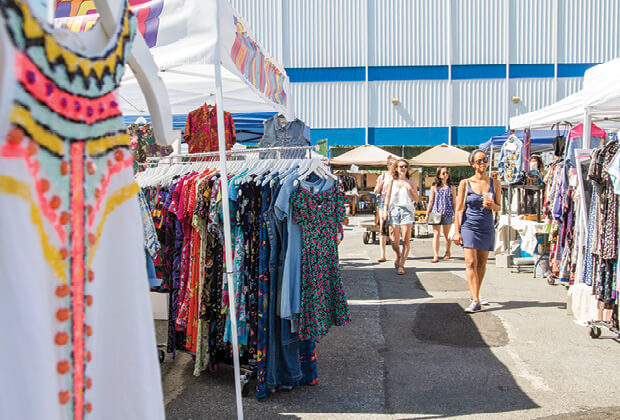

In January of this year, Saturday Night Live aired a sketch called “Bushwick, Brooklyn 2015.” As it opens, three black men—Kenan Thompson, host Kevin Hart, and Jay Pharoah—stand on a street corner, seemingly nervously shifting back and forth. “Yo, it’s getting crazy out here,” Pharoah says. “I told y’all I ran into Ray the other day, right?” Hart replies, before launching into a story.
“So I’m walking down Bushwick, right? I was on my way to Martha’s.”
“Your baby mama?”
“Nah, nah–that new artisanal mayonnaise spot. I read about it on Darnell’s food blog. He said the garlic truffle is a must-try, so I’m like, aiight, I’ll try it.”
There is only one real artisanal mayonnaise spot in Brooklyn worth discussing: Empire Mayonnaise. Where do you think it started? I asked Empire’s sales and marketing director, Corinne Butler Thompson. As she very helpfully told me over email, “We actually launched the company at the Flea/Smorg and they were fantastic for us!”
Markets like Brooklyn Flea and the Night Bazaar perfectly embody modern Brooklyn. They combine a genuine love of craft and perfection with naked capitalist ambition and an implicit (or explicit!) belief that the only way to judge the worth of something is its monetary value. This combination of indie authenticity and a completely wholehearted, core-level embrace of capitalism is what 2015 Brooklyn is all about: tattooed women and men on ads for $2 million condos.
But if fleas have created New Brooklyn, they may be on their way to being victims of their own success. Highly desirable, Brooklyn is now incredibly, outlandishly expensive. Last year, a report by housing data group RealtyTrac named it the country’s least affordable place to buy a home. Separately, the Council for Community and Economic Research evaluated the cost of living in 308 American urban areas, and put Brooklyn at number two, just behind Manhattan. Maybe modern Brooklyn isn’t really somewhere that can support gigantic flea markets in spaces that could otherwise be condos or Chase banks?
Most fleas have, so far, found ways to endure. Some vendors feel that at least some keep themselves afloat based on wringing every last dollar from the vendors themselves (rather than trying to increase their markets’ popularity or overall sales). One former vendor at who requested anonymity for fear of future reprisals against their stand alleges that Long Island City’s LIC Flea does just this.
“For the vendors, it’s one of the most expensive markets to do,” the vendor said. “And they just lie to you about how much foot traffic they get. Their whole business model is to get first year vendors to sign up for the whole season” via pressure and giving preferential treatment to season-long vendors, like giving them exclusive rights to sell some foods. At $600 per weekend for the span of April through October, a full season can run nearly $17,000. This fee does not include electricity, which for which vendors pay extra, whether or not it actually works for your particular stall. This vendor says other fleas—the Queens Night Market or the Hester Street Fair—run closer to $100 a day. Vendors are also strongly encouraged not to sell at any other markets.
The LIC Flea refutes these claims. Its president, Josh Schneps, said in an emailed statement:
We do not make our vendors exclusively sell at our market. That is the policy of other markets, but not ours. We believe that vendors should have the opportunity to grow their businesses and gain visibility in other avenues.
If vendors book an entire season they do not have to pay for the season in advance. We do have pre-paid installment packages that offer discounted rates.
I think our rates are very fair and the rates of most flea markets are pretty standard.
In fact, things are not much different at Smorgasburg, where some who’ve sold there also complain about pressure not to sell anywhere else. Stalls at Smorgasburg can run as much as $325 per day (though they can also go for as little as $75 a day). Payment is weekly, however, with no pressure for a long-term commitment.
As El Gato Nachos’ Meerpohl said, “You have to clear $300 in sales which really, honestly, let’s hope that you’re doing that. I think whatever it is that they charge is totally fair.” At Smorgasburg, she adds, your money gets you more than a booth. “Working with them, and the opportunities that they provide for people that work really hard with them, and are open to it… like, I get where their money is going… how they’re expanding and the support that they give us whether it’s through press, or even just helping us with how to get through legal issues like permits and stuff like that. They provide a certain amount of support. I like working with them because of that.”
Still, the secret to keeping your market going is simple, says Demby. “Any business, anywhere in the world, it’s always about real estate.” The Fleas and Smorgasburgs take place on a variety of city parks, state parks, private lands, and spaces that are some combination thereof so complex that even Demby can’t keep them straight. Is he worried about being priced out, I wonder?
“Of course,” he said. “Yeah, that’s what we spend a lot of our time making sure that that doesn’t happen.” The amount of money the Flea spends on security, cleaning, and waste removal is “way more” than their rents at any of their locations, he tells me.
“In Brooklyn Bridge Park, we have one or maybe two guys that just go up and down Joralemon Street so that people in that neighborhood, you know, feel like it’s clean. In Williamsburg, we have a guy who only works the area outside the market footprint. We have garbage cans all over the neighborhood. That is our bread and butter. We run a tight ship. We are super responsible, and responsive. When problems come up, we deal with them right away… We take it really seriously and that’s why we get the privilege of being in these wonderful places.”
Still, at this point the Flea must be able to relax a little, I say to him. It’s one of Brooklyn’s most recognizable and popular attractions.
“Yeah, but 20,000 people on your doorstep every Saturday, it’s not something that everybody wants,” Demby said. “There’s a lot of people in New York City, and they’re never all happy.”
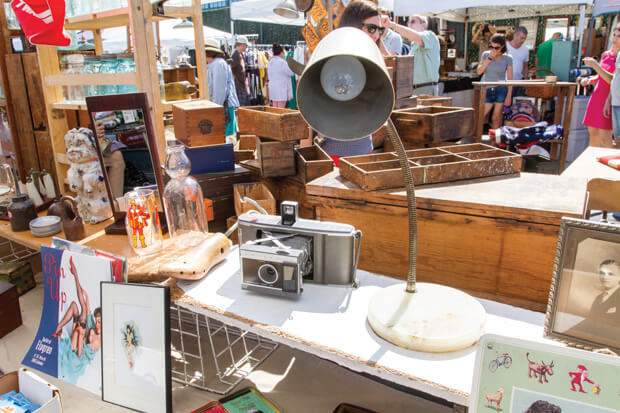

Despite some closures, it seems food markets are here to stay for the foreseeable future. In part, that’s because they’ve adapted to hyper-expensive Brooklyn. Attend any of these markets, and while you may be baking in the sun and eating in the dirt, you aren’t getting anything approaching a bargain. A single taco, at its most bare-bones, might be $6; a signature item like a lobster roll from the Red Hook Lobster Pound runs $17. But, then, the Flea does not set prices; vendors charge what they think is fair. The Flea, as an organization, just provides a beautiful location that customers want to visit. Market forces do the rest.
Talking to Demby, I tell him that I remember the earliest days of the Flea. When the place had an electric atmosphere, and everything happening seemed new and surprising, when it was possible to hunt through a box of jewelry and find something interesting and inexpensive.
He chuckles and says, “That was a long time ago.”
You might also like 
















